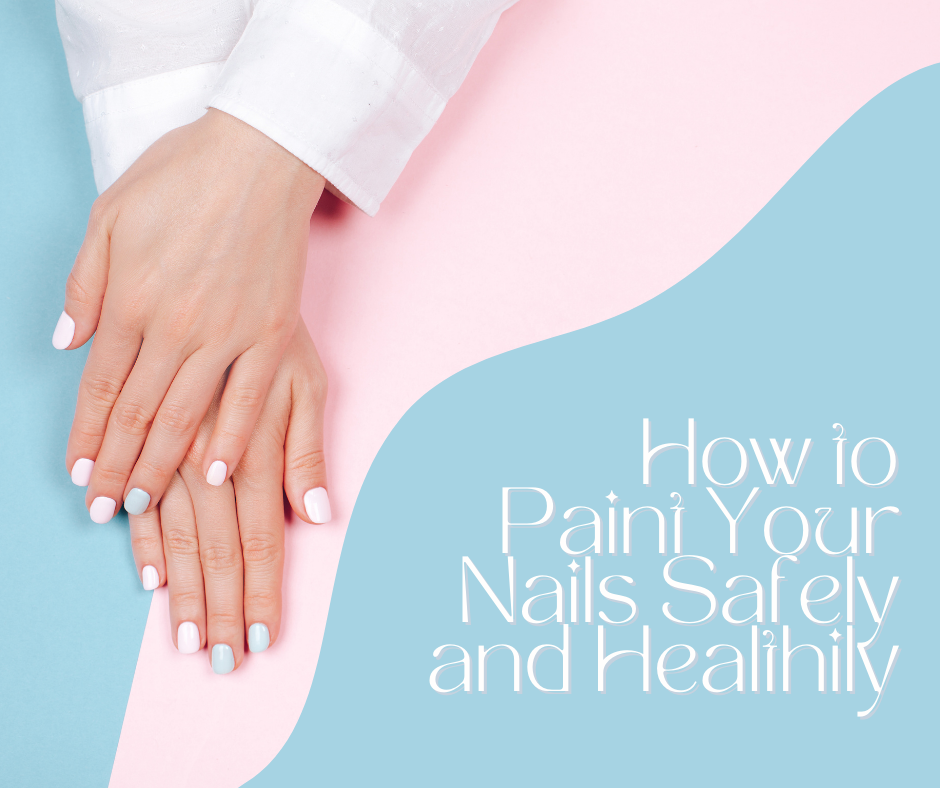Painting your nails can be a fun and creative way to express yourself, especially on stressful days. But, even if it’s fun, painting your nails comes with a lot of responsibility that lots of people fail to remember. In this article, we shall be reminding you of what frequent nail painting does to your nails and how you can prevent anything bad happen to your nails and the rest of your body.
Why Can Painting Your Nails Be Bad for You?
Sure, painting your nails is super pretty, but we just want you to know the potential downsides of having them painted regularly. Always be responsible with whatever you’re doing for your body.
1. Physical Effects
One concern with painting your nails is that the chemicals in nail polish, such as formaldehyde and toluene, can be harsh on nails and can cause them to become dry, brittle, and prone to breaking. Additionally, if you frequently paint your nails and don’t give your nails enough time to breathe, it can make them even weaker.
This can be seen in the way nails sometimes become yellow or even brown. These nails likely do not see the light of day very often and need to take a breather sometimes! This gets even worse if you frequently do gel nail polish. With constant filing and buffing, your nails will become very thin, making them prone to breakage. It’ll take weeks to get your nails back to their natural form.
2. Chemical Effects
Another concern with painting your nails is the risk of allergic reactions. Some people may be sensitive to the ingredients in nail polish and can develop skin irritation or an allergic rash. Furthermore, if you bite your nails, the chemicals in nail polish can be ingested, which can also lead to health problems.
If you’ve ever smelled that strong scent of acetone before, then you’ll know it’s not pleasant. Now imagine that harsh chemical poured all over your nails and fingers!
How to Protect Your Nails
Don’t worry, it is not necessary to avoid painting your nails altogether. There are ways to minimize the damage and keep your nails healthy while still enjoying the fun of painting them.
1. Use Gentler Nail Polish and Removers
First, consider using nail polish that is free of harmful chemicals, such as formaldehyde, toluene, and phthalates. Some brands have started to produce “5-free” nail polish which means that it does not contain those harmful chemicals.
When it comes to nail polish removers, some companies have also started producing removers that aren’t as harsh as traditional acetone. They also come in pad form so you no longer have to drench your pads with nail polish remover—this controls how much chemical goes onto your hand.
2. Let Your Nails Breathe
Second, make sure to give your nails a break between painting them. It’s recommended to let your nails go without polish for at least a week, or even better, two weeks, to allow your nails to breathe and recover from the effects of nail polish.
A personal recommendation would be to let your nails grow to whatever maximum length you’re comfortable with. Then, when your nails break or you’re no longer comfortable with the length, cut them to however short you want them to be, then remove the nail polish completely for a few days or weeks. It just seems better this way because neither long, unpainted nails nor short, painted nails look as great as their counterparts.
3. Pamper Your Nails
Third, take care of your nails by keeping them moisturized and well-groomed. This can be done by using cuticle oil, a good hand cream. Cuticle oil helps keep the area around your nail moisturized and prevents any hangnails and dry skin from affecting you—nobody likes putting their hands in their pocket and being shocked by a hangnail! Meanwhile, hand cream keeps both your nails and your hands nice and supple and soft.
4. Monitor Changes in Your Nails
Lastly, it is important to be aware of any changes in your nails or skin that might indicate a problem, such as discoloration, thickening, or changes in the shape or texture of your nails. If it doesn’t look like how it should, then there’s probably something you’re doing wrong with it that might not be remedied by simply removing your nail polish. If you notice any changes, consult with a dermatologist or healthcare professional.
Conclusion
Overall, painting your nails can be a fun and creative way to express yourself, but it’s important to be mindful of the chemicals in nail polish and how they can affect your nails and overall health. With the right precautions and nail care, you can enjoy painting your nails while keeping them healthy.
